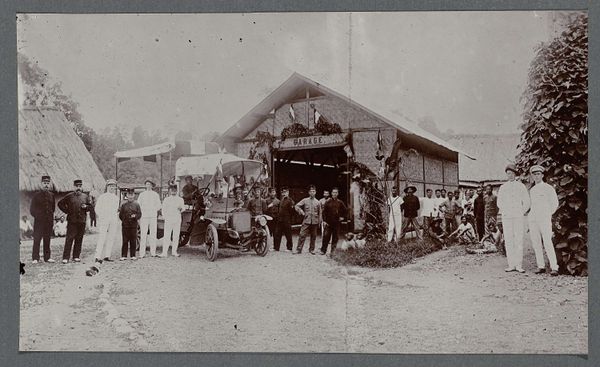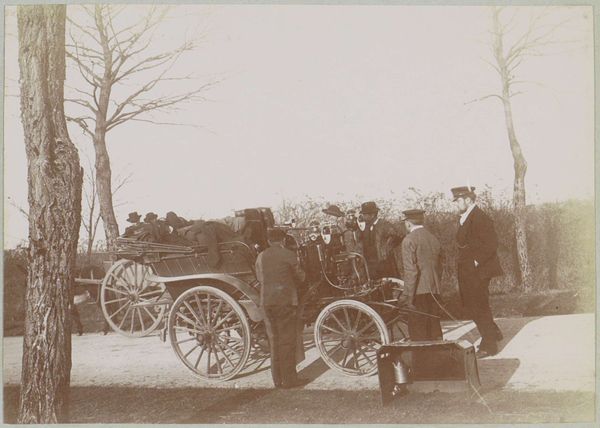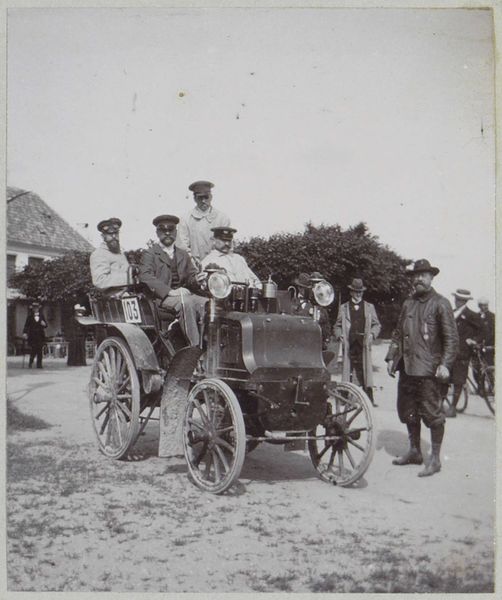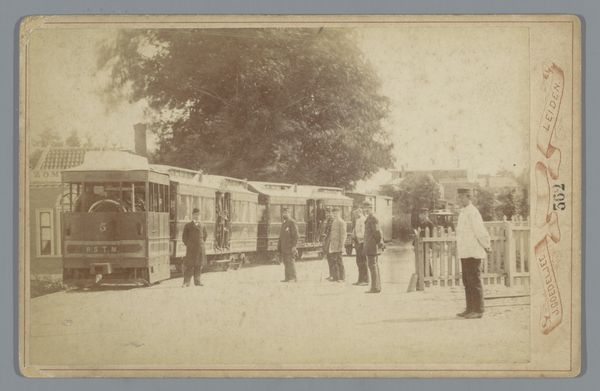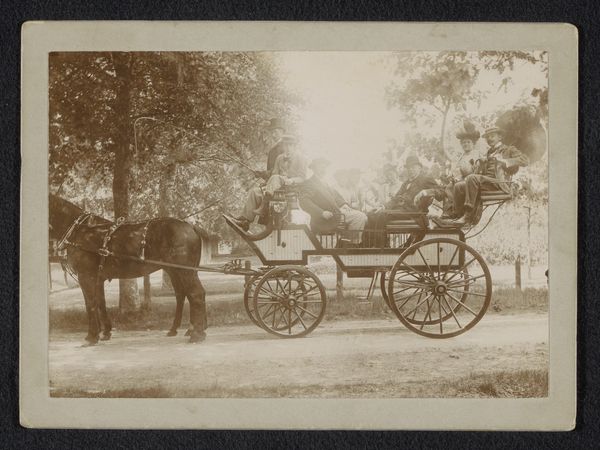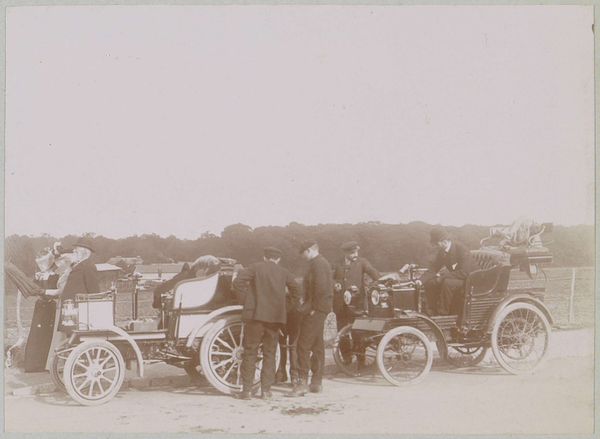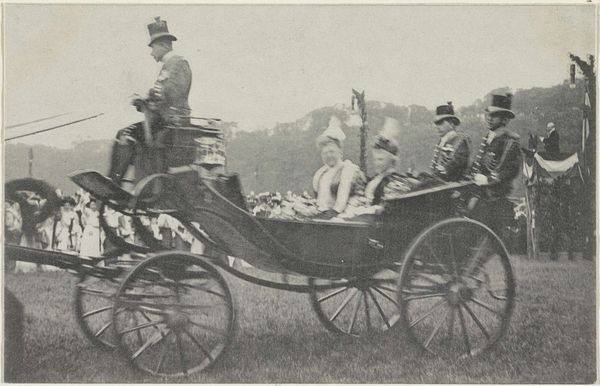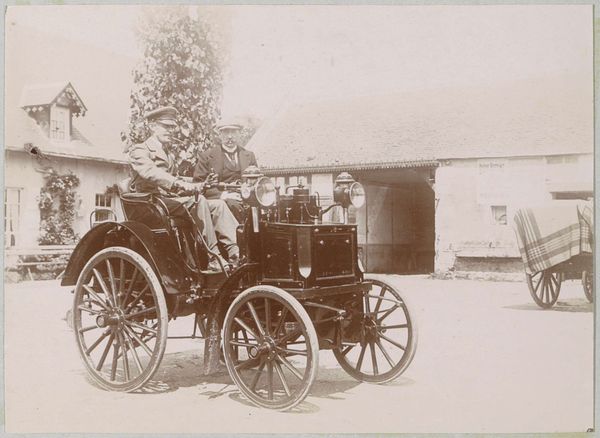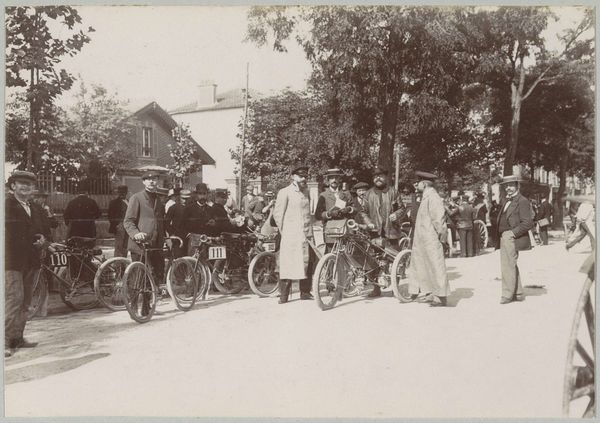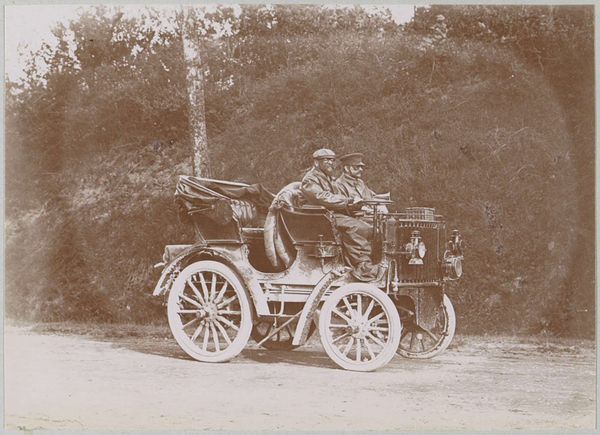
photography, gelatin-silver-print
#
portrait
#
dutch-golden-age
#
photography
#
historical photography
#
group-portraits
#
gelatin-silver-print
#
realism
Dimensions: height 138 mm, width 200 mm
Copyright: Rijks Museum: Open Domain
Curator: Look at this fascinating gelatin-silver print. The artwork is titled "Militairen bij een vrachtauto te Krueng Seumpo" and we believe it was created sometime between 1903 and 1913. Editor: My first impression is that the tonal range in the photograph amplifies a deep sense of disquiet. Despite the gathering being outdoors, it is visually confined, almost claustrophobic. Curator: I can understand your sentiment. Given that it is a historical group portrait, the stiff poses of the soldiers might enhance this feeling. Historically, group portraits were often carefully staged to convey a specific message about power, hierarchy, or unity. Do you get that sense from this? Editor: Absolutely. Focusing on the vehicle, I immediately read it as a potent symbol of Dutch colonial infrastructure encroaching on indigenous landscapes. It feels awkward, incongruous in the environment. Also, think about the physical labour required to even produce this photograph at that time. Curator: The truck could symbolize this foreign power, yes, a symbol of logistical overreach. I am interested in what the neutral background means here - what is left out is just as telling. What do we not see, and what are we prevented from understanding by this carefully constructed depiction? Editor: I agree that what is unsaid is as significant. But think of how the photograph’s materials—the silver and gelatin—were processed. Where did the raw materials come from, who refined them, and how did those global economic activities shape the conditions under which this very image could even be produced? Curator: An intriguing question! Shifting back to visual reading: the contrasting light and dark evokes a subtle tension. It brings my eye directly to that man in the center. And is that a European woman in the vehicle? Editor: The light calls attention to a specific body - the one directing all other labor - right at the center of resource extraction. The material processes by which images like these circulated became tools in solidifying specific notions of the colony as resource. Curator: This really gets you thinking about visual and material culture, doesn’t it? How this photograph served to reinforce certain colonial ideas and became embedded in cultural memory through its wide distribution. Editor: Indeed! Reflecting on the layers of production and extraction interwoven into a single image reminds us of the often unseen networks of power and labor at play.
Comments
No comments
Be the first to comment and join the conversation on the ultimate creative platform.
